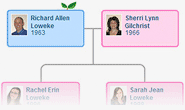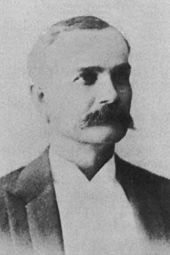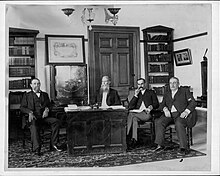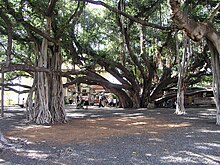Conspirator's in Collusion or Parties to the Crimes in Hawaii Against Queen Liliuokalani or A Judge and Attorney With Friends Planned Against Our Queen
Reviewed by Amelia Gora (2017)
Judge Alfred Stedman Hartwell
Judge Alfred Stedman Hartwell's Geni Profile
Share your family tree and photos with the people you know and love

- Build your family tree online
- Share photos and videos
- Smart Matching™ technology
- Free!
Share


Historical records matching Judge Alfred Stedman Hartwell
About Judge Alfred Stedman Hartwell
Civil War Union Brevet Brigadier General. After graduating from Harvard University in 1858, Hartwell became a tutor at Washington University in St. Louis, Missouri. When the Civil War began, he joined the 3rd Missouri Reserve Regiment and fought for the surrender of the pro-Confederate Camp Jackson. After relative peace was established in St. Louis in June of 1861, he returned to Massachusetts and began his studies at Harvard Law School. In September of 1862, he received a commission as a first lieutenant in the 44th Massachusetts Volunteer Infantry. He saw action in Goldsboro and Kingston, North Carolina. On January 26, 1863, Governor John Albion Andrew received permission to begin recruitment of African-Americans to man regiments of volunteer infantry. The "United States Colored Troops" were to be commanded by white officers. Initially, Hartwell was commissioned as senior captain of the 54th Massachusetts Volunteer Infantry. Because of excessive enlistments, a second regiment, the 55th, was formed and Hartwell was made its lieutenant colonel. On July 21, they embarked for New Bern, North Carolina. With the news of losses suffered by Robert Gould Shaw and the 54th Massachusetts Regiment, the 55th was ordered to Folly Island, South Carolina where they set up a base camp. The commanding officer, Norwood P. Hallowell was forced to resign in the fall of 1863 because of an injury; and Hartwell was elevated to colonelcy of the 55th. The issue of equal pay with white troops consumed much of Hartwell's time. He also advocated for the promotion of qualified African-American men to higher rank. On October 7, 1864, the pay issue was finally resolved to the satisfaction of the men. At the end of November of 1864, the 55th was sent on an expedition down the Broad River to destroy the railroad at Grahamville, South Carolina. On November 30th, they came upon a large Confederate earthwork fort hidden in the trees at Homey Hill. Hartwell led three separate charges in an attempt to take the fort. He was wounded three times and had his horse blown out from under him. He was removed from the field, treated, and sent home to recuperate. On December 30, 1864, he was breveted brigadier general "for gallant services at the Battle of Honey Hill." He rejoined his regiment in January of 1865 and served for the remainder of the war trying to keep central South Carolina secure. After the war, Hartwell returned to Massachusetts and practiced law. In 1868, he was offered and accepted the position of First Associate Justice of the Supreme Court of Hawaii by King Kamehameha V. In 1874, he was asked to serve as King Kalakaua's Attorney General. He reluctantly agreed, but resigned after one year to resume the practice of law. In Hawaii, he served on a number of boards and commissions. He served as editor of the Hawaiian Gazette, member of the Board of Trustees for the Planters' Labor and Supply Company, and president of the Pacific Cable Company. He supported the idea that the United States should acquire a permanent lease with Hawaii for a naval base at Pearl Harbor. After the overthrow of the Hawaiian monarchy in January of 1893, Hartwell served on the Annexation Commission. When Hawaii was annexed by the United States on July 7, 1898, he traveled to Washington to advise Secretary of State John Hay regarding Hawaii's future. On June 15, 1904, he was appointed Associate Chief Justice of the Supreme Court of Hawaii. He served in that capacity until August 15, 1907 when he was sworn in as Chief Justice. In February of 1911, he resigned and set sail for Europe. His vacation was cut short by illness and he returned to Hawaii. He died at his home in Honolulu on August 30, 1912. His grave is the westernmost grave of a Civil War general on American soil. (bio by: Thomas Fisher)
http://www.findagrave.com/cgi-bin/fg.cgi?page=gr&GSln=Hartwell&GSfn=alfred&GSbyrel=all&GSdyrel=all&GSst=13&GScntry=4&GSob=n&GRid=51499184&df=all&
http://www.findagrave.com/cgi-bin/fg.cgi?page=gr&GSln=Hartwell&GSfn=alfred&GSbyrel=all&GSdyrel=all&GSst=13&GScntry=4&GSob=n&GRid=51499184&df=all&
| 1836 |
June 11, 1836
|
Dedham, Norfolk, MA, USA
| ||||||||||||||||||||||||||||||||||||||||||||||||||||||||||||||||
| 1880 |
November 5, 1880
Age 44
|
Honolulu, Honolulu, HI, USA
| ||||||||||||||||||||||||||||||||||||||||||||||||||||||||||||||||
| 1912 |
August 30, 1912
Age 76
|
Honolulu, Honolulu, HI, USA
| ||||||||||||||||||||||||||||||||||||||||||||||||||||||||||||||||
| ???? |
Honolulu, Honolulu County, Hawaii, United States
Alfred S. Hartwell
Contents[hide]Life[edit]Alfred Stedman Hartwell was born June 11, 1836, in Natick, Massachusetts. His father was Stedman Hartwell and mother was Rebecca Dana Perry (1805–1872).[1] He graduated from Harvard University in 1858 where he was elected into the Phi Beta Kappa Society.[2]War[edit]He moved to St. Louis, Missouri, and worked as an instructor at Washington University. In April 1861, at the outbreak of the American Civil War, he enlisted as Corporal in the Third Missouri Reserve regiment. Missouri was officially neutral but supporters of the Confederacy had captured Liberty Arsenal, and his company was called up to help recapture the weapons. This resulted in the Camp Jackson Affair.[3]In June he returned to Boston and enrolled in Harvard Law School, but by September 1862 became a first lieutenant in the 44th Massachusetts regiment. When the United States Colored Troops (USCT) were formed for African-American recruits, he was promoted to captain on March 31, 1863, of the 54th Massachusetts. However, the number of volunteers was higher than expected, so he was promoted to lieutenant colonel, and helped organize the 55th Regiment Massachusetts Volunteer Infantry under command of Norwood Penrose Hallowell. The 54th's role in the Second Battle of Fort Wagner was depicted in the film Glory. The 55th moved into their former barracks, and was ordered to embark in July 1863. They served building trenches on Folly Island supporting the siege of Charleston, South Carolina. When Hallowell had to resign for treatment of an old wound, Hartwell was promoted to command the regiment on November 3, 1863.[3] Morale became a problem when his troops discovered that despite being promised the same pay as their white counterparts, they had a major deduction for a "clothing allowance". Hartwell complained to his commanding officers, and suggested promoting African-American troops to officers. On May 24, 1864, he commissioned John Freeman Shorter to be a second lieutenant, but it was refused by General John Porter Hatch. He protested up to the Secretary of War and threatened to resign, until the pay issue was settled in August 1864.[4] In the Battle of Honey Hill on November 30, 1864, he commanded a brigade that included the 55th and 54th Massachusetts and the 102nd USCT. He was wounded and had his horse shot from under him leading three charges. Captain Thomas F. Ellsworth received the Congressional Medal of Honor because "Under a heavy fire [Ellsworth] carried his wounded commanding officer [Hartwell] from the field." The battle was generally a failure, but proved another example where the African-American troops could be used in battle.[5] On January 23, 1865,[6] President Abraham Lincoln nominated Hartwell for the award of the honorary grade of brevet brigadier general, to rank from December 30, 1864, for gallant services at the battle of Honey Hill.[7] The U.S. Senate confirmed the award on February 14, 1865.[6] On January 30, 1865, he rejoined his brigade, and in February 1865 he commanded the brigade in an attack on James Island, South Carolina (see Battle of Grimball's Causeway). After a few skirmishes, both sides retreated.[8] After the fall of Charleston, he marched his forces through the city, with the African-American troops at the head of his brigade. They occupied the city and dealt with the large number of refugees. On April 5, 1865, he commanded another combined force that marched through Charleston again, although by now the Confederate army was generally dispersing. Their duties now were mostly peace-keeping and rebuilding bridges.[9] On May 1 his units were based in Orangeburg, South Carolina, and finally in June his promotions of black officers were finally approved. In August the 55th was taken out of service. However, Hartwell was sent to investigate Milton S. Littlefield who was accused of fraud (known as the "Prince of carpetbaggers").[10] He was finally discharged on April 30, 1866. He returned to Boston, and was elected to the legislature of Massachusetts as a Republican. After the war he finished his last year of law school and graduated with an LLB degree from Harvard in 1867. He briefly started a law practice in Boston with classmate Samuel Craft Davis.[11] On August 15, 1868, he left at the suggestion of fellow Massachusetts lawyer Elisha Hunt Allen, intending to spend a year or two on an adventure to the Hawaiian Islands.[2] Hawaii[edit]He was appointed by King Kamehameha V to the supreme court of the Kingdom of Hawaii on the day he landed, September 30, 1868.[12]There were so few trained lawyers in Hawaii, one of the other supreme court justices, Hermann A. Widemann, had never been to law school. Elisha Hunt Allen was still acting as chief justice, despite living in the United States much of the time.[13] He rented a room at Washington Place from Mary Dominis. Also living there was John Owen Dominis who was Governor of Oahu, and his wife Lydia, the future Queen Liliʻuokalani. He quickly learned the Hawaiian language and by December 1868 was instructing juries as a circuit court judge without an interpreter.[2] At the time, the supreme court was trial court for several kinds of cases, handled appeals, and its judges acted as circuit judges on other islands. He married Charlotte Elizabeth "Lottie" Smith (1845–1896) on January 10, 1872, in Kōloa on Kauaʻi island. Her father was missionary physician James William Smith who arrived in 1842 to Hawaii. Her brother was lawyer William Owen Smith (1848–1929)[14] who later joined him in law practice.[15] They had eight children:
Hartwell was appointed Attorney General by King Kalākaua on February 18, 1874, replacing Albert Francis Judd (who moved onto the court), but was replaced on May 28.[18] On December 5, 1876, he was appointed again, replacing William Richards Castle. This time he served until July 3, 1878,[12] when he went into private practice. Hartwell suspected that Claus Spreckles had him removed because Hartwell was opposed to Spreckles plans to license water rights for his sugarcane plantations. In 1883 he closed his practice and traveled back to Boston, but returned to Hawaii in 1885.[13] In late 1890 he traveled to Washington, DC to negotiate on a cable connection between Hawaii and west coast of the United States. Although he did not support the overthrow of the Kingdom of Hawaii, he did lobby for its annexation to the US. In 1899 he traveled to Washington, DC as unofficial representative until Robert William Wilcox was elected.[19] On the same trip he attended the International commercial congress in Philadelphia.[20] In 1895 Hartwell wrote the document signed by Liliʻuokalani in which she agreed to abdicate, avoiding death sentences for those (including herself) convicted after the 1895 Counter-Revolution in Hawaii. Liliʻuokalani remained bitter about what she saw as a former friend working for her enemies.[21] He formed a law form with Lorrin Andrews Thurston, one of the leaders of the overthrow, and then added his assistant William F. L. Stanley.[22] In 1901 he was hired to challenge the income tax in the Hawaii territorial court.[23] His daughter's brother-in-law George Robert Carter became Territorial Governor of Hawaiʻi in 1903. On June 15, 1904, he was appointed again to the Supreme Court of what was now the US Territory of Hawaii, and became chief justice August 15, 1907.[12] He replaced Walter F. Frear who in turn replaced Carter as Governor. On March 9, 1911, he resigned and left in June for a vacation in Europe, but became ill in London and returned to Hawaii. He died in Honolulu on August 30, 1912, and was buried in Oahu Cemetery.[2] See also[edit]
References[edit]
External links[edit]
Categories:
Reference: https://www.geni.com/people/Judge-Alfred-Hartwell/6000000015778455654
https://en.wikipedia.org/wiki/Alfred_S._Hartwell
*******************************
Contents[hide]Life[edit]Smith was born August 4, 1848 in Kōloa on the island of Kauaʻi. His mother was Millicent Knapp (1816–1891). His father was physician James William Smith (1810–1887).[1] His parents were in the tenth set of missionaries to Hawaii from the American Board of Commissioners for Foreign Missions who arrived in 1842.[2] His sister Charlotte Elizabeth "Lottie" Smith (1845–1896) married Alfred Stedman Hartwell (1836–1912), who was a former general in the American Civil War, on January 10, 1872. His brother Jared Knapp Smith (1849–1897) became a physician and carried on his father's medical practice. His sister Melicent Lena Smith (1854–1943) married William Waterhouse (1852–1942). Waterhouse served as mayor of Pasadena, California 1904–1906.[3]He attended Daniel Dole's missionary school at Kōloa, Punahou School from 1863 to 1866,[4] and then Massachusetts Agricultural College (now the University of Massachusetts Amherst).[5] On his return he worked as a clerk in his brother-in-law Hartwell's law office. He served as sheriff on Kauaʻi in 1870 and then Maui in 1872 through 1874. While working at the Lāhainā Courthouse, on April 24, 1873 he planted a banyan tree (Ficus benghalensis) to commemorate the 50th anniversary of the arrival of Christian missionaries on the island.[6] On March 23, 1876, he married Mary Abbey Hobron. They had five children: Clarence Hobron Smith, Ethel Frances Smith born November 17, 1879, Pauline Melicent Smith, Anna Katherine Smith, and Lorrin Knapp Smith.[7] He founded the law firm of Smith, Thurston & Kinney with Lorrin A. Thurston and William Ansel Kinney in Honolulu in 1887. Politics[edit]He acted as deputy attorney general, and was elected as a representative from Maui to the legislature of the Hawaiian Kingdom from 1878 to 1884. He helped draft the 1887 Constitution of the Kingdom of Hawaii, which King Kalākaua was forced to sign, giving it the name "Bayonet Constitution". His law partner Thurston then became minister in the new cabinet.[8] In the 1887 and 1888 sessions he was elected to the upper House of Nobles. In 1892 he was elected as representative from Kauaʻi.[9]Overthrow[edit]Murder in the family[edit]His brother Jared Knapp Smith was shot dead on September 24, 1897. It was suspected to be in retaliation for ordering patients suspected of leprosy to have tests that might send them to exile in Kalaupapa. Similar tensions had ignited the Leper War on Kaua'i four years earlier. His former law partner Kinney sailed to Kauaʻi island and was appointed special prosecutor. A native Hawaiian suspect Kapea Kaʻahea was arrested, tried on November 13, 1897, and found guilty of murder in the first degree.[11]Instead of waiting for next scheduled term of the circuit court, a special session had been called. Honolulu English-language newspapers said "there seems no doubt of the guilt of the chief prisoner" even before the trial.[12] The objections brought to the Supreme Court of Hawaii were quickly rejected on February 3, 1898.[13] Kapea was hanged on April 11, 1898. The rushed nature of the prosecution was thought to be an attempt to show the United States that the government was in firm control. Only a few months later in July 1898, the Newlands Resolution would annex the islands. Of the four executions for capital punishment between 1889 and 1903 in Hawaii, all four were of non-whites within a four-month period.[11] Return to private practice[edit]In August 1898 Smith offered to resign, but although now annexed, the old republic government continued to operate.[14] On March 20, 1899, Smith was replaced as attorney general by Henry Ernest Cooper and returned to private practice. Smith was elected to one term of the Territory of Hawaii senate from 1907 to 1909.[9]Smith was a trustee of the Kamehameha Schools, founded from the estate of Bernice Pauahi Bishop, from 1884 to 1886 and from 1897 to 1929.[15] He was a trustee of the Lunalilo Estate, the Alexander Young Estate and the Honolulu children's hospital. He was on the board of the Guardian Trust Company, Bishop Trust Company, Inter-Island Steam Navigation company and Alexander & Baldwin. Despite his role in the overthrow, deposed Queen Liliʻuokalani selected him to be a founding trustee of her own estate when she made her will in December 1909.[16] Her personal assets were left in a trust to benefit orphans.[17] On November 30, 1915, Prince Jonah Kūhiō Kalanianaʻole challenged the will in court, saying she was "of weakened mind" under the influence of the trustees. This was known as case 23 Haw. 457 in the Supreme Court of Hawaii. The feisty queen demanded a public hearing of her sanity in February 1916. The firm, now Smith, Warren & Sutton, successfully defended Liliʻuokalani.[18] His law partners at the time were Louis J. Warren and Edwin White Sutton.[19] Liliʻuokalani's charity still operates today.[20] Legacy[edit]His ties to the oligarchy known as the "Big Five" that dominated the island economy led the opposition press to call him "King Bill the First". They described him using a mix of stereotypes: He was narrow-minded as a New Englander, domineering as a Russian Czar, yet suave as a Frenchman. He was obstinate as a Scotchman, generous as a Southerner, and at times vicious as an Indian. But he was withal the hardest working official we have ever heard of—next to the Devil.[14]In 1926 he was appointed to help organize the public archives of Hawaii.[9] He donated many of his papers to the collection, including drafts of the 1887 constitution.[8] Smith died April 13, 1929 in his home in the Nuʻuanu Valley near Honolulu from pneumonia. After a number of partner changes, his law firm survives as Case Lombardi & Pettit.[24] Partner Daniel H. Case is the father of Steve Case and uncle of Congressman Ed Case. Case was lawyer for Grove Farm, when it was bought by his son.[25] It includes the area where Smith grew up. Other notable members of the firm through the years included Cyrus Nils Tavares, Alan Cooke Kay, and W. F.L. Stanley.[24] References[edit]
Categories:
Reference: https://en.wikipedia.org/wiki/William_Owen_Smith
| |||||||||||||||||||||||||||||||||||||||||||||||||||||||||||||||||
Conspiracy is documented:
"Chief Justice Lee charged the jury, that every fraudulent combination, mutual understanding, or concerting together of two or more, to do what is obviously and directly wrongfully injurious to another, is a conspiracy;.........understood each other and concerted together to defraud....they were guilty. .....That it was not necessary to prove a direct concert between......., but that such concert was a fair subject of inference for the jury, from all the facts submitted in evidence. That a mutual concert in cases like this, could seldom if ever be proved, otherwise than by circumstances, as conspirators do not call in witnesses to their undertakings."
Reference: HAWAIIAN REPORTS, 1851, The King v. Anderson and Russell, Volume I, Supreme Court Law Library/Archives/Main Library, Honolulu, Oahu, Hawaii.
Judge A. S. Hartwell was the brother-in-law of William O. Smith.
Reference:
The Pacific commercial advertiser. (Honolulu, Hawaiian Islands) 1885-1921, September 28, 1891, Image 2
Image provided by University of Hawaii at Manoa; Honolulu, HI
Persistent link: http://chroniclingamerica.loc.gov/lccn/sn85047084/1891-09-28/ed-1/seq-2/


Research incomplete.
aloha.
References:
http://iolani-theroyalhawk.blogspot.com 682 issues to date
http://myweb.ecomplanet.com/GORA8037
************************************************
facebook:
************************************************
facebook:













No comments:
Post a Comment